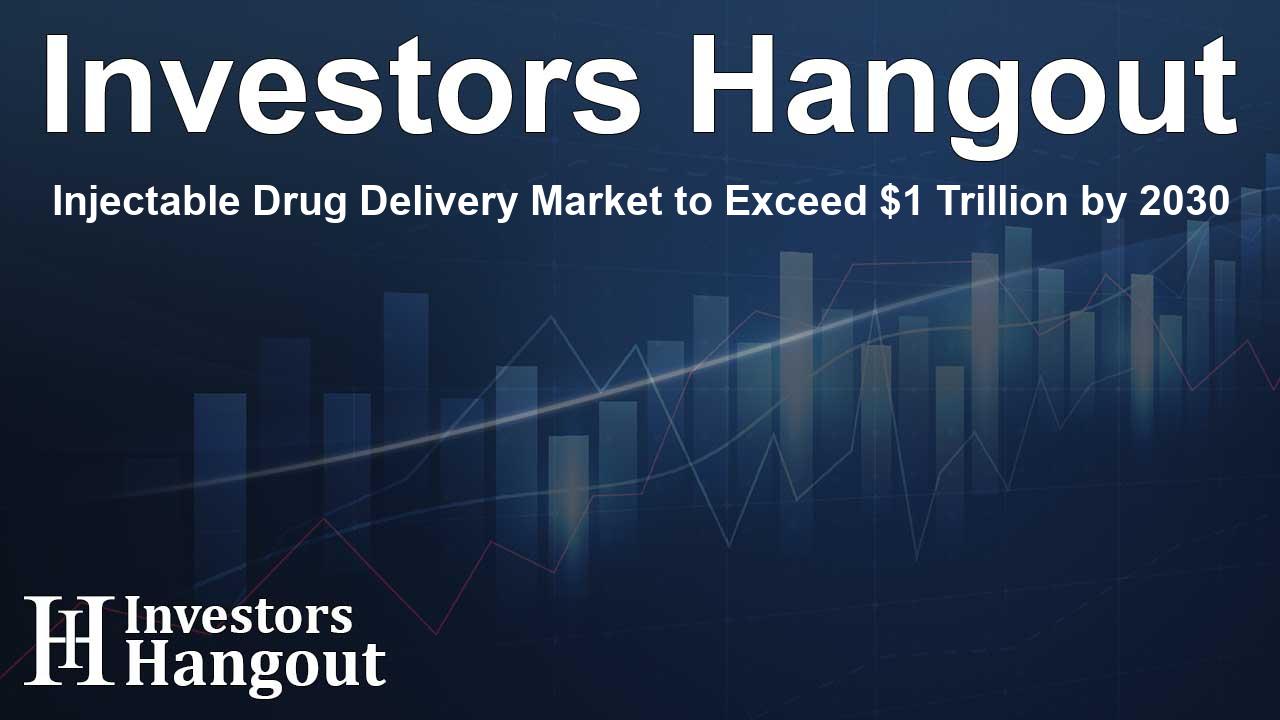Injectable Drug Delivery Market to Exceed $1 Trillion by 2030

Global Injectable Drug Delivery Market Growth Overview
The global injectable drug delivery market is on a remarkable trajectory, poised to reach an estimated valuation of over US$1,034.78 billion by 2030. With a compound annual growth rate (CAGR) of approximately 8.4%, this market is set to expand significantly driven by various critical factors.
Rising Demand and Market Drivers
Key trends underpinning market growth include an increase in chronic diseases globally, such as diabetes, cancer, and autoimmune disorders. As these health issues rise, so does the need for biologics, fostering a significant demand for effective drug delivery systems. Furthermore, developed regions are progressively adopting advanced delivery technologies, supported by strong healthcare infrastructures. Patients increasingly prefer self-administered therapies that ensure convenience and efficiency in treatment.
Emerging Markets and Accessibility
Meanwhile, in emerging markets, accessibility to healthcare continues to improve. Countries are prioritizing government-backed immunization and chronic disease management programs, leading to accelerated growth in these areas. These developments are crucial, as they address the healthcare needs of expanding populations and contribute to better health outcomes.
Innovations in Injectable Drug Delivery
Innovative technologies have also paved the way for enhanced patient experiences in injectable drug delivery. The adoption of wearable injectors, autoinjectors, and even needle-free delivery systems stands out as a trend that enhances patient compliance. Patients benefit from home-based treatment options that make managing their health more convenient.
Focus on Personalized Medicine
The ongoing shift towards personalized medicine and combination therapies drives manufacturers to create tailored solutions to meet complex drug regimen needs. Smart injectors with connectivity capabilities are among recent advancements. These devices facilitate easier data sharing and monitoring, which is vital for effective chronic disease management.
Market Segmentation Insights
In market segmentation, the formulations segment commands the largest market share due to the rising use of biologics. Chronic diseases fuel growth further, as the parenteral route of administration proves ideal for enhancing drug bioavailability. Additionally, the increasing focus on research and development for targeted drug delivery methods continues to drive market expansion.
Formulation Packaging Trends
Focusing on formulation packaging, the ampoules segment is anticipated to register the highest CAGR. Ampoules offer multiple advantages, including single-use design that minimizes cross-contamination risks. They present cost-effective solutions relative to vials and offer longer shelf lives for delicate therapeutic agents.
Geographic Market Dynamics
Geographically, the APAC region is projected to experience exponential growth during this forecast period. Noteworthy is the aging population and an increase in chronic diseases, which requires attention from both the healthcare industry and government policies to ensure effective care delivery.
The Role of Sustainable Practices
Another essential factor characterizing the market is the increasing emphasis on sustainability. Companies in Europe and beyond invest in reusable injection systems to align with environmental regulations, which is a growing concern among consumers.
Key Industry Players
Several prominent players shape the injectable drug delivery landscape. Companies such as Johnson & Johnson Services, Inc., F. Hoffmann-La Roche Ltd., and Pfizer Inc. consistently develop innovative solutions, adopting strategies that foster comprehensive offerings across the globe. Their focus on growth and operational excellence connects them to over 30 countries, making them leaders in this market.
Looking Ahead
As innovations continue to unfold in this sector, they are expected to enhance safety, usability, and therapeutic efficacy, making injectable drug delivery systems indispensable in contemporary healthcare strategies.
Frequently Asked Questions
What is the projected value of the injectable drug delivery market by 2030?
The market is projected to reach over US$1,034.78 billion by 2030.
What are the main drivers of growth in the injectable drug delivery market?
Key drivers include increasing prevalence of chronic diseases, demand for biologics, and advancements in drug delivery technologies.
Which segment is expected to see the highest growth?
The ampoules segment within formulation packaging is anticipated to exhibit the highest CAGR.
How are technological innovations impacting the market?
Innovations, particularly in personalized medicine and smart injectors, enhance patient compliance and treatment efficacy.
What geographic region is leading the market expansion?
The APAC region is expected to experience the highest CAGR, driven by an aging population and increased healthcare investments.
About The Author
Contact Hannah Lewis privately here. Or send an email with ATTN: Hannah Lewis as the subject to contact@investorshangout.com.
About Investors Hangout
Investors Hangout is a leading online stock forum for financial discussion and learning, offering a wide range of free tools and resources. It draws in traders of all levels, who exchange market knowledge, investigate trading tactics, and keep an eye on industry developments in real time. Featuring financial articles, stock message boards, quotes, charts, company profiles, and live news updates. Through cooperative learning and a wealth of informational resources, it helps users from novices creating their first portfolios to experts honing their techniques. Join Investors Hangout today: https://investorshangout.com/
The content of this article is based on factual, publicly available information and does not represent legal, financial, or investment advice. Investors Hangout does not offer financial advice, and the author is not a licensed financial advisor. Consult a qualified advisor before making any financial or investment decisions based on this article. This article should not be considered advice to purchase, sell, or hold any securities or other investments. If any of the material provided here is inaccurate, please contact us for corrections.
